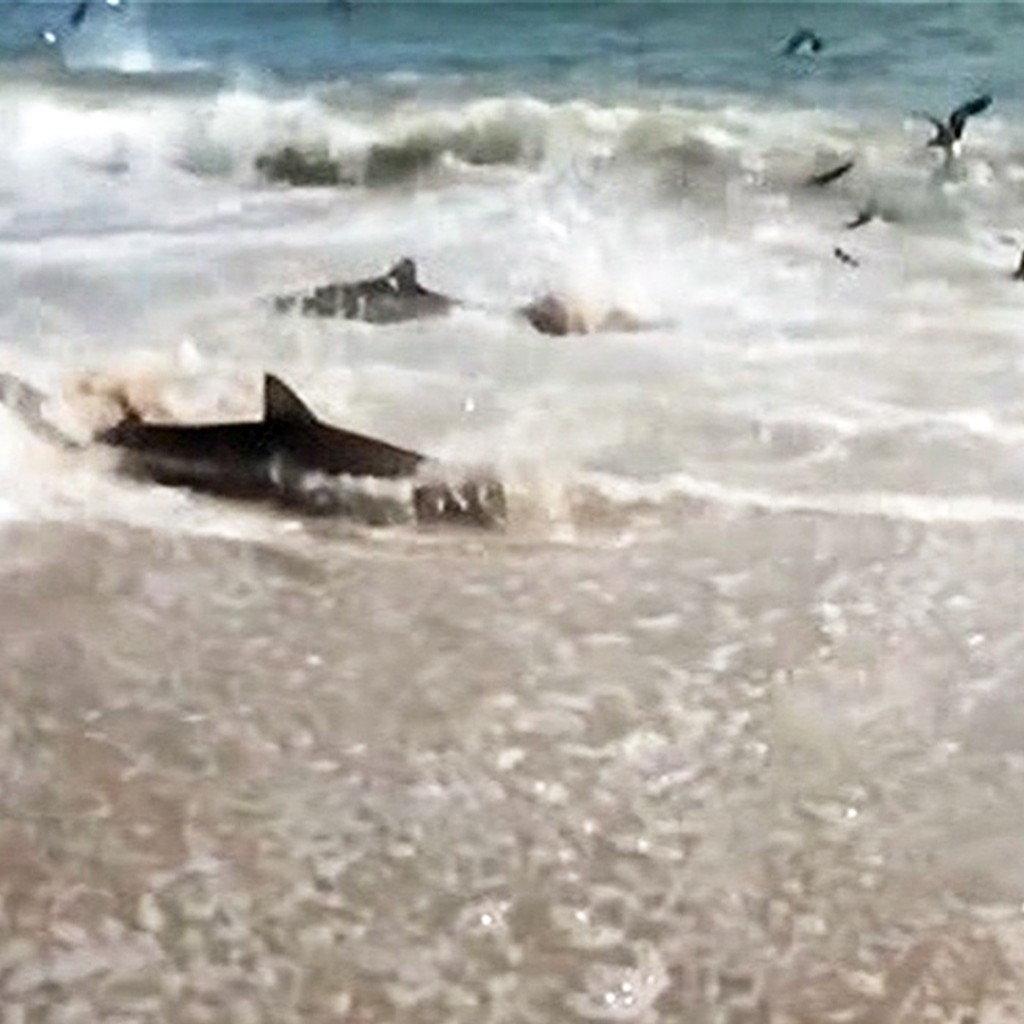
With 88 reported unprovoked shark attacks and five fatalities worldwide, 2017 was “just an average year,” according to the University of Florida International Shark Attack File.
The group said it investigated 155 incidents and determined 88 were unprovoked. While the total number of attacks are slightly higher than the most recent five-year annual average of 83, the five fatalities are just below the average of six deaths per year. Of the 88 attacks, 60 percent occurred in the U.S., while Australia took the No. 2 spot with 14.
Lindsay French, who manages the database housed at the Florida Museum of Natural History on the UF campus, said the slightly higher than average attack numbers were expected as human populations continue to climb and people spend more time in the water.
“It really was just an average year, and significantly, the U.S. saw no shark attack fatalities for the second consecutive year,” French said. “While we don’t put too much emphasis on year-to-year changes, a slight increase is expected as beach tourism and water sports gain in popularity. And as has been the case for years, Florida saw more attacks (31) than any other state while Volusia County led the state in reported attacks with nine, 29 percent of Florida’s total.”
The Sunshine State as a whole accounted for 35 percent of the worldwide total this year, which is in line with historical trends. Volusia County, namely Daytona Beach, is historically the single biggest hotspot for unprovoked shark attack in the world according to ISAF data.
“The hotspots we’re keeping an eye on are Ascension Island, which had its first attacks since the 1800s, and Reunion Island, which had two of last year’s five fatalities,” French said.
In addition to Reunion Island, Australia, Costa Rica, and Cuba recorded one fatality each in the 2017 report. Cuba’s attack resulted in the country’s first fatality since the 1930s.
In the U.S., other states reporting attacks were South Carolina (10), Hawaii (6), California (2), with single incidents in Massachusetts, North Carolina, Texas and Virginia.
Fifty-nine percent of the attacks worldwide involved board sports. French said this group spends a large amount of time in the surf zone, an area commonly frequented by sharks.
“We need to remember we’re going into a shark’s natural habitat when we enter the water,” French said. “Water sport activities often unintentionally attract sharks because of splashing, paddling, kicking and wiping out. But the number of unprovoked attacks is remarkably low considering the billions of people who participate in water sports each year.”
According to one piece of ISAF data illuminating the rarity of shark attacks, travelers are nearly 100 times more likely to be bitten by a person in New York City than they are to be bitten in an unprovoked shark attack while visiting the beach.
One way to lower the odds of an attack even further, however, is to avoid wearing bright swimwear – especially “yum yum yellow,” the term shark researchers use to describe the bright yellow color traditionally used in flotation devices and rafts.
ISAF doesn’t publish details on provoked attacks, such as a diver getting chomped after grabbing a shark, or a fisherman being bitten after feeding or attempting to unhook a shark they caught.
French said the world’s shark populations continue to suffer as a result of over-fishing and habitat loss.
“On average, unprovoked shark attacks cause six fatalities worldwide each year,” she said. “But fisheries kill about 100 million sharks and rays annually, so there’s definitely a real need to conserve these animals and their habitat to ensure their long-term survival. The play an important role in marine ecosystems.”



